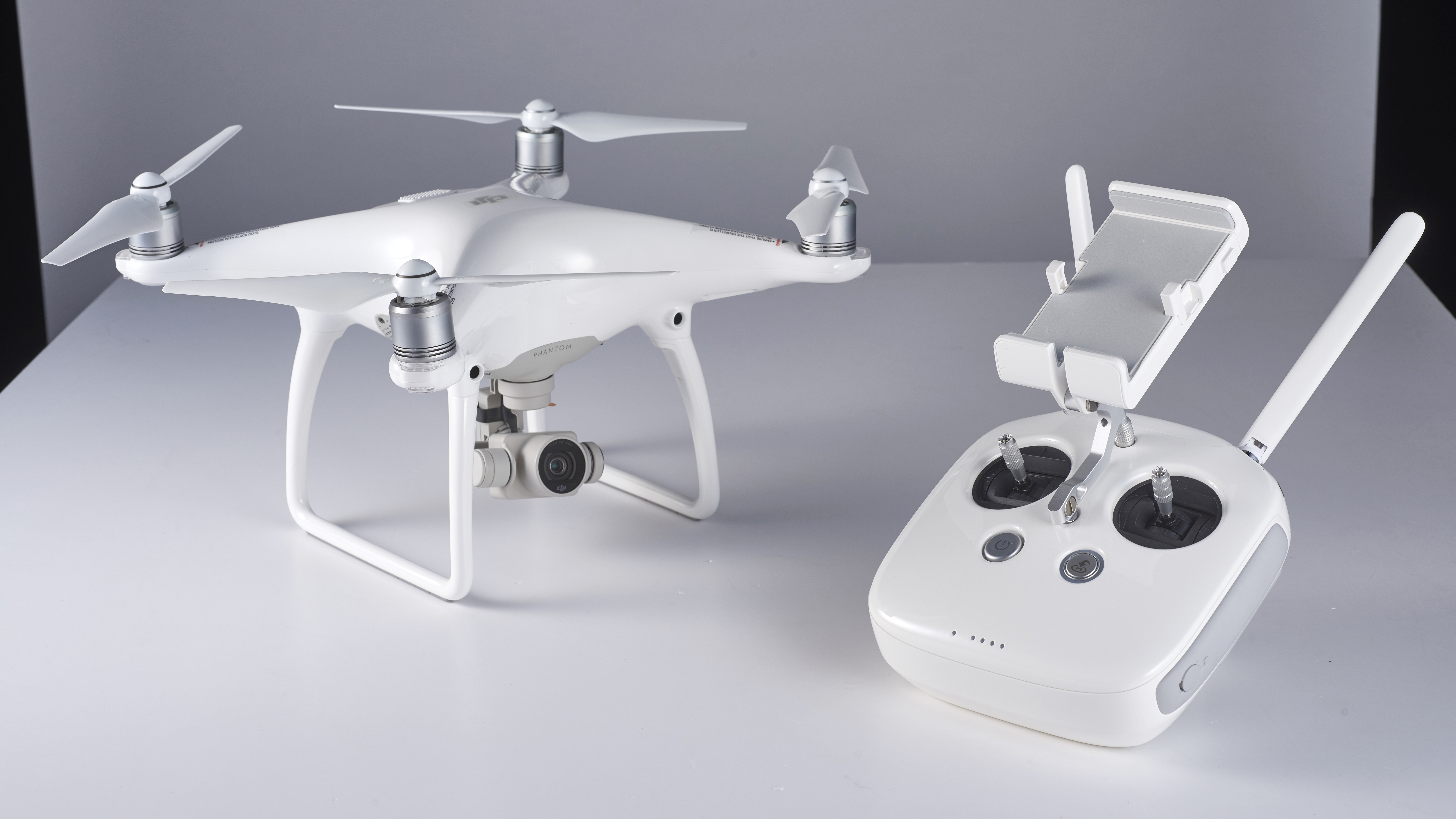Why you can trust TechRadar
The Phantom 4 has several features to help new pilots, including auto takeoff and landing, and you can set features such as beginner mode, which limits the Phantom 4's flight speed and distance from the home point. You can also find a comprehensive set of videos and tutorials on the DJI website.
There are several flight features that will appeal to photographers, including the ActiveTrack flight mode. This enables a subject to be selected on the screen, which the drone will then follow automatically – it's ideal for extreme sports such as mountain biking or water skiing, as the drone can film without the need for an additional pilot.
Intelligent flight options also enable you to set points of interest – once selected the drone will circle that point. There are also more common commands, such as Follow Me and waypoints. Waypoints have been around for a while in drones, and enable you to plot your flight route from one point to another.
If you're using one of the new intelligent flight modes – TapFly, ActiveTrack or Smart Return Home – the object avoidance feature will cause the Phantom 4 to either stop or fly around the object; all very clever.
Another nice touch within the Object Avoidance options is Backwards Flying, which makes the drone literally back up when approached from the front – although we obviously wouldn't advise approaching a drone from the front to try this out.

TouchFly is another new feature, and enables you to fly the Phantom by just tapping the screen; this takes a while to get used to, especially if you're used to using a handset and control sticks, but it enables you to concentrate on getting your shots or footage, rather than keeping the drone in the air.
I found that object avoidance worked well, with the Phantom 4 stopping short of objects in its path. It should be noted that before the test I was warned not to test the object avoidance through trees early in the year, as the system has issues with trees without leaves.
Sign up for breaking news, reviews, opinion, top tech deals, and more.
When an object is detected the controller first sends out an audible warning before the drone stops mid-flight. There are several different object avoidance options, which can be switched between quickly by touching the sensor icon at the top of the apps interface.
As with the Phantom 3, standard flight is incredibly easy, even in gusty conditions. This means that anyone, even if completely new to flying, should be able to pick up the handset and successfully fly the Phantom 4, although again you should familiarise yourself with the regulations issued by the aviation authorities in the country where you're flying, and we'd also recommend taking an approved training course.
Video capture
The small mechanical gimbal that stabilises the camera in flight is impressive, and even when the drone is being battered by wind, the footage captured by the camera remains steady.
Photographers will find the Lightbridge live view technology a real benefit. This is capable of beaming a 720HD video signal across a distance of 1.2 miles, although 500m (or less – you must always be able to see the drone) is the maximum legal distance allowed between you and your drone under UK law; different regulations apply in other countries, so be sure to check.

The live view stream between the drone and app is virtually instant, with only the slightest delay noticeable.
Video quality is excellent – colours are bright, and the contrast level gives footage punch and crispness. In bright conditions the image is clear and sharp at all resolutions; however, as is common with cameras of this size, when the light falls the quality of the footage quickly deteriorates, and noise starts to become apparent.
When the light dipped I found it was well worth switching the video to manual in order to improve the quality of footage, rather than relying on the auto settings.

Footage at 1080p at both 60fps and 120fps is smooth, as long as the light is good. As the frame rate increases the bitrate for each frame reduces and definition drops. At 30fps and 60fps the quality of the video is exceptional; however once the frame rate is upped to 120fps quality drops dramatically, especially in overcast conditions.
DJI has worked on the lens to ensure distortions are kept to a minimum, so footage doesn't exhibit the fish-eye look that's common with action cameras such as the GoPro Hero4 Black.
Flying qualifications
If you're looking to fly any drone for commercial use you need a licence, and this is applicable in all countries. In the UK this licence is issued through the CAA and called a Permission for Aerial Work (Pfaw).
There are several National Qualified Entities (NQE) such as Aerial Motion Pictures (AMP) where you can train to obtain the licence. Information on AMP and other entities can be found on the CAA site or equivalent aviation authority site for your territory. Failure to obtain a licence could land you with a large fine and even a custodial sentence.
Ali Jennings is the imaging lab manager for Future Publishing's Photography portfolio. Using Imatest Master and DxO Analyser he produces the image quality tests for all new cameras and lenses review in TechRadar's cameras channel. Ali has been shooting digital since the early nineties and joined Future's Photography portfolio back in 2003.
